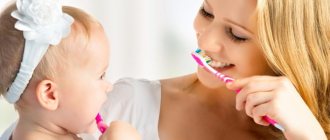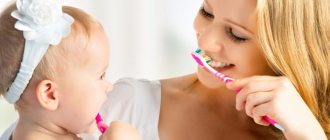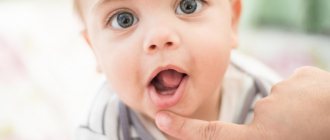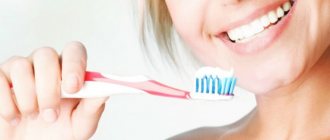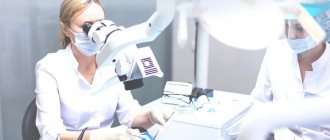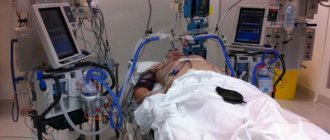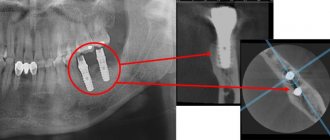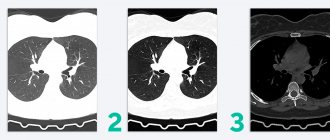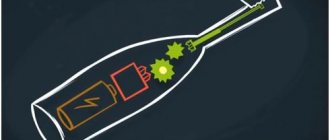In the first years of life, a child’s milk teeth erupt, he gradually begins to eat food familiar to adults, and a chewing reflex is formed. During this period, it is important to choose the right hygiene products so that the child has healthy and strong teeth in the future.
Today we will tell you how to choose your first brush and paste, prevent the development of caries in the early stages without going to the dentist, and also get through the eruption of baby teeth.
- Where do babies get caries?
- Hygiene products for the first 6 months
- What should the first brush be?
- What kind of pasta should a child under 3 years have?
- How to cure tooth decay without a dentist
- When to wean off a pacifier to avoid problems with bite
- Rules for oral care up to 3 years
- Tips from a pediatric dentist: video
When to start brushing your baby's teeth
Hygienic care is necessary even before teething. The procedure must be carried out several times a day: after sleep and during the day after feeding.
The procedure for cleaning your baby's gums is as follows:
- place the child on your lap;
- take a gauze swab and carefully walk it over the surface of the gums. For greater convenience, you can wrap your finger with a bandage or use special finger pads, which can be purchased at the pharmacy.
It is enough to simply moisten the tampon with clean water, but for greater effect you can use foam designed just for such purposes (for example, SPLAT Junior (SPLAT Junior) for children 0-4 years old).
Foam is a modern, effective product that has many beneficial properties. Firstly, it contains lactic enzymes that protect the mucous membrane from infection and bacteria that cause various diseases (for example, stomatitis). Secondly, components such as creatine, arginine and others have an anti-inflammatory and calming effect, reducing pain during teething. Thirdly, many foams contain calcis or fluoride in small dosages (the former are best used before a year, the latter - after).
How to properly clean a baby's mouth
Immediately after being discharged from the hospital, you need to start wiping the newborn baby’s gums with a thick gauze swab dipped in water. You can also wet the tampon in:
- chamomile infusion, if the baby does not have constipation;
- bactericidal infusion of sage;
- St. John's wort decoction, as this plant strengthens the gums;
- anti-inflammatory decoction of calendula.
It is not recommended to use decoctions and infusions of herbs to treat the oral cavity of a baby more than 2-3 times a week, as their abuse can lead to allergic reactions.
Maintaining hygiene, which involves treating the oral mucosa with a gauze swab, is necessary for both newborns who are breastfed and those children who are fed artificial formula. Breast milk does not clean the oral cavity, but pollutes it. If you do not sanitize your baby’s mouth after feeding, then pathogenic bacteria will begin to multiply in it, which can lead to infection of the tooth enamel.
Brush your child's teeth correctly
Teeth begin to erupt at about 6 months of age. Some children easily survive this period of time, others suffer from pain and experience great inconvenience.
Emerging teeth can be cleaned, just like the gums in the first months of a baby’s life: take a gauze swab, apply a special foam to it and rub it over the surface of the gums and teeth. Sometimes you can find finger pads with soft bristles on sale: they make the procedure much faster, better and more convenient.
Perhaps the baby will not like the procedure at first: you should not force things - it is better to give the child the opportunity to get used to it. When the baby is no longer nervous at the sight of tampons, you can move on to using a brush (there is no exact time frame for when exactly this should be done). You can hear from some dentists that it is advisable to use a brush after the appearance of at least 4 teeth in a row, others advise not to rush, waiting until the baby is 2 years old.
Features of the structure of milk teeth
Baby teeth form in the sixth week of fetal development. Normally there are 20 of them:
- 8 molars;
- 8 incisors;
- 4 fangs.
Temporary teeth consist of the same tissues as permanent teeth:
- dentin (in temporary teeth it is softer and less mineralized);
- enamels;
- pulp.
However, primary incisors, canines and molars have features:
- low crowns;
- large distance between crowns;
- long thin roots that dissolve before the temporary tooth falls out and the permanent tooth erupts;
- thin enamel - only 1 mm;
- wide channels.
The structure of baby teeth is only slightly different from permanent teeth, so they no less need proper care. You can start brushing your child’s teeth after the very first incisor has erupted.
. Early training in hygiene will be an excellent prevention against many dental diseases that can affect the primary incisors, and then the rudiments of the permanent ones formed under them.
If you don’t care for your baby’s teeth or care for them incorrectly, your baby will have to visit pediatric dentists already in the first three years of life. Or he may tolerate drilling rotted teeth with a bur, which is painful and unpleasant for a small child, even with high-quality anesthesia.
Brushing your teeth
Cleaning should be done after waking up and before going to bed. The duration of the procedure is at least 2-3 minutes. Particular attention should be paid to chewing teeth, since they contain small grooves where bacteria accumulate and caries begins to form.
Not all children enjoy brushing their teeth: some may become capricious, nervous, and break out. First of all, you need to make sure that the fear goes away: brushing your teeth can be turned into a game, for example, you can let your child brush your teeth, and you brush them for him.
High-quality toothpaste and brush are of no small importance for hygiene, but their use is clearly not enough: once a day you need to floss (by the way, this advice applies not only to children, but also to adults). Floss can remove small food debris from dental spaces that are difficult to reach with a brush. Carious formations appear primarily in such places, since an excellent environment for the growth of bacteria is created there.
Rules for oral care up to 3 years
Only good hygiene can help avoid caries. To ensure effective brushing, follow these rules.
- You need to brush your teeth twice a day, in the morning after breakfast and in the evening before bed.
- The correct brush movements are sweeping, from the gums to the tip of the tooth.
- Don't forget about the inner surface of your teeth.
- Show your child that you enjoy brushing your teeth. Set an example for him.
Your child’s first impressions of going to the dentist depend on oral hygiene. When the rules are followed and caries does not occur, communication with the doctor is reduced to medical examinations and does not leave terrible memories for life.
In the future, the child will trust the dentist and will tolerate possible procedures more easily. This means that caries will be treated on time and will not lead to complications.
All the most necessary hygiene products for children from 0 to 3 years old are collected in our children's set No. 1. It includes:
- Splat Baby toothpaste with apple and banana or vanilla flavors with a fingertip included;
- Curaprox Curakid toothbrush;
- Gel Pansoral “First teeth”;
- Brush Baby wipes with xylitol;
- Toothbrush holder Miradent Funny Animals.
These are basic products that will help your child maintain healthy oral microflora and fight tooth decay.
Which toothbrush should you choose?
Children's toothbrushes, without exception, have soft bristles. It is distinguished from an adult brush by a smaller head, which can be rubberized, which is done to reduce the risk of injury during the cleaning process.
The packaging of most brushes for children contains information about the age they are intended for: these recommendations should not be neglected. It is better to choose a brush with an unusual design that can attract the child’s attention and make him more willing to brush his teeth.
The brush should be changed once every 3 months, or better yet more often: you need to monitor the condition of the bristles, and not hesitate to replace them when they begin to deteriorate. The point here is not only the lack of aesthetics, but also the loss of functional qualities: if the bristles are fluffy, then it will be difficult to remove plaque, which is fraught with unpleasant consequences.
Each family member should have their own brush!
Recently, electric toothbrushes have become increasingly popular. There are special children's brushes that can be used after 3 years. Practice shows that children show more interest in electric toothbrushes than in regular ones. Again, each child should have their own personal attachment.
Where do babies get caries?
Local immunity in the child’s oral cavity develops gradually; the first bacteria are transmitted from the mother at birth and during feeding. Initially, the oral cavity is sterile, and the microflora is formed when contacts with the outside world occur: parents lick a pacifier or bottle, try complementary feeding with a baby spoon, kiss the child.
During these contacts, bacteria are transmitted to which the immune system adapts, but it can fail due to sudden changes or illness. Transmission of harmful bacteria most often occurs at an early age through the so-called “window of infection,” but it is also possible at earlier or later periods.
The child’s microflora is not yet ready and cannot cope with many infections: thrush or stomatitis fungus, streptococci and staphylococci (provoke the development of sore throat), as well as E. coli and the herpes virus.
One of the latest studies states that the most commonly transmitted infection is Streptococcus mutans. It is this that provokes the development of caries. Moreover, it is transmitted even if the parent does not have carious teeth, since the adult’s body is more prepared to cope with viruses and infections - cariogenic bacteria do not have time to form caries in the enamel. But the baby’s body is just learning, and the baby’s risk of developing caries is higher because of this. Therefore, dentists recommend limiting contact: various licks and kisses.
The main sources of transmission of cariogenic bacteria in a child under 3 years of age: tasting food during complementary feeding, licking pacifiers, bottles and toys, kissing
Which pasta should you choose?
Before buying toothpaste, many modern parents go online to read reviews, but you shouldn’t trust them: many reviews are left on request in order to increase sales. The advertising is aimed primarily at women, since they are usually the ones who buy such things.
The main myth that can often be found in such reviews is the enormous harm of fluoride for children.
Fluoride or calcium: which is better for a child?
Fluoride is not poison at all. This substance is beneficial, including for children. Dental societies in many countries around the world have conducted studies that have proven that fluoride-containing toothpastes are absolutely not harmful.
You can often see that children should use a paste containing calcium, but this is not at all true.
When choosing pasta, you need to take into account the age of the direct consumer.
- Children under 1 year. This is the only age when it is better to purchase a paste with calcium in its composition, since during this period of time the tooth enamel is still quite weak and contains few minerals. Children often swallow the paste, so it should not contain parabens and sodium lauryl sulfate, which pose a health hazard. Fluoride-containing paste can be dangerous only where there is an increased fluoride content in the water: an excess of this substance can cause the development of fluorosis. If a filter is used, it can retain most of the fluoride, which will lead to its deficiency and, as a consequence, the development of caries. Read more about children's toothpastes here.
- Children from one to 6 years old. During this period, you can use a paste with fluoride, making sure that its content in the composition does not exceed 500 ppm. Pastes with calcium can also be used, provided that the child either does not have caries at all, or a single case of carious formation has been recorded.
- Children over 6 years of age. For children of this age, the concentration of fluoride contained in the paste should be increased to 1000 ppm.
Advice for parents who want to rid their child of dental problems:
- It is better to alternate different pastes: use a paste with calcium in the morning, and one with fluoride in the evening.
- You can get by with a calcium paste, but after each brushing, rinse your mouth with a special fluoride-containing liquid. Remember that such a liquid cannot replace a thorough cleaning!
Hygiene products for the first 6 months
It usually takes 6–10 months before the first teeth appear. Oral hygiene at this time is just as important as after teething, since it affects the formation of strong local immunity and the bite of teeth in the future. Note that during this period, parents should pay attention to three things in their baby’s oral care arsenal: the right pacifiers, cleaning wipes with xylitol, and a gel to facilitate teething.
Orthodontic nipples
If you use pacifiers, firstly, they must be orthodontic, and secondly, do so before 6 months, when the first teeth begin to cut. After 6 months, the pacifier may affect future bite formation.
Removal of pacifiers until 8-9 months of age forms the correct bite and helps the development of the jaw. According to studies of dental anomalies, more than half of the complaints about malocclusion are received during the period of early mixed dentition (6–9 years), but the formation of the position of the teeth begins in infancy. Parents of children participating in the study indicated that the upper incisors were tilted due to the bad habit of sucking pacifiers and fingers.
In addition, it is at this age that the sucking reflex is replaced by a chewing one, so it will be psychologically easier for the child to wean himself off the pacifier.
Philips AVENT Ultra Air pacifier 0-6 months with a pattern (2 pcs) SCF345/20
AVENT Ultra Air night pacifier 0-6 months (2 pcs) SCF376/12
Philips AVENT Ultra Air pacifier 0-6 months (2 pcs) SCF244/20
Wipes with xylitol
Until the child has his first teeth, it is recommended to use sanitary napkins with xylitol. They help maintain normal pH levels and reduce acidity levels in the mouth. Due to the increased level of acidity in the mouth, a favorable environment is created for the proliferation of many bacteria: for example, cariogenic and thrush bacteria.
To use, wrap a napkin around your finger and clean the surface of the oral cavity: gums, tongue, teeth.
Teething gels
When teething, the child may develop a fever and begin coughing from the constant flow of saliva. To avoid mistaking these symptoms for ARVI or another disease, pay attention to the following signs.
- The gums turn red and become white in places where they erupt.
- Saliva flows profusely.
- The baby puts his hands and toys into his mouth to relieve the itching.
- The baby may throw food, does not eat enough, overeats, which can cause an upset stomach.
To make teething easier, try massaging the gums with a silicone fingertip or give your child a special teether. And if local massage does not help, try special gels. They work well with teethers and finger guards and also relieve inflammation. These gels contain only harmless components of plant origin.
Jack N Jill Silicone Finger Brush (6-12 months)
Teether brush miradent INFANT-O-BRUSH yellow
Oral gel Pierre Fabre Pansoral First teeth
Teething gel BabyDerm Teething gel, 30 ml
Pastes to relieve painful symptoms during teething
There are several toothpastes designed to reduce the pain associated with teething.
In addition to the paste indicated at the very beginning of the article, we can recommend:
- Gel paste “Weleda” (Weleda) with calendula;
- ROCS Baby (ROKS Baby) with chamomile extract.
Both products will help your baby cope with pain.
Choosing a brush and paste
The range of toothbrushes is varied in any store. Children's samples should have many low-stiffness bristles to effectively remove plaque and not injure the gums. For additional hygiene, you can purchase a mono-tuft brush. If your child is already grown up and is not afraid of loud noises, take a closer look at electric toothbrushes: they perfectly remove plaque and prepare the child for professional instruments at the dentist.
Toothpaste must taste good. Many products have been created for children with strawberry, banana, and so on flavors. It should also be low abrasive and contain calcium, fluorides and hydroxyapatite for primary teeth. Kids often swallow toothpaste - choose a harmless one.
Pastes for children with stomatitis
Stomatitis occurs quite often in children. It is much easier to prevent the occurrence of a disease than to treat it later.
High mucosal immunity is the best protection against stomatitis. Enzymes (lactoferrin, lysozyme, etc.) included in the composition of children's pastes from SPLAT: Junior and Juicy Set have a beneficial effect on the immune system.
ABOUT THE IMPORTANCE OF THE PROCEDURE
Some parents mistakenly believe that caring for baby teeth is a waste of time, because over time they will be completely replaced by molars. Dentists assure that this is not so: tooth enamel is very thin in any case, the sugar contained in food can damage it, which, in turn, will cause infection, including sore throat and pyelonephritis.
In addition, a diseased tooth does not take part in the process of chewing food, which will negatively affect its digestion. If caries is advanced, there is a risk of tooth extraction, which will negatively affect the bite, and can also cause curvature of permanent teeth and the occurrence of defects in the pronunciation of certain sounds. That is why competent and timely care is necessary.
What happens if you don't brush your teeth well enough?
Some parents are not serious about brushing their children's teeth, believing that the child is already fine, which is a misconception.
Poor hygiene is a consequence of the appearance of microbial plaque and stone formation, which can cause:
- gingivitis;
- caries;
- stomatitis;
- pulpitis;
- formation of purulent seals on the gums.
What foods are good for your first teeth?
Foods rich in calcium
.
First of all, it is cottage cheese and hard cheese. Slightly less calcium is found in milk, fermented milk products, green leafy vegetables, gooseberries, currants, and cherries. Sources of vitamin D, without which calcium cannot be absorbed, are egg yolk and butter. You should include carbohydrate foods in your child’s diet less often: bread, potatoes, and especially sugar and sweet foods. Sweets provoke the active proliferation of bacteria in the mouth, which leads to early caries
. “The longer you don’t offer your child sweets, the better,” says Kuznetsova, “for example, children under three years old should not be given chocolate at all.”
Basic preventive measures
Proper nutrition:
- Limiting easily digestible carbohydrates contained in confectionery products.
- Do not eat sweets at night.
- Do not eat sweets between main meals.
- If paragraphs 2 and 3 have been violated, you must thoroughly rinse your mouth or brush your teeth.
- Ensuring sufficient chewing load (introducing vegetables into the diet).
- For normal teeth growth, you need dairy products, fish, which contain calcium and phosphorus, as well as vegetables and fruits rich in vitamins.
